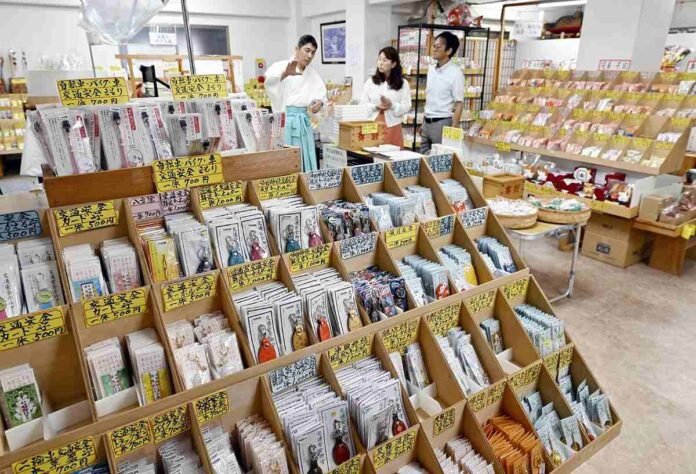At the Okita Shrine in the Chuo Ward of Okayama City, various amulets can be seen.
11:05 JST, August 31, 2024
OKAYAMA — Many people in Japan buy amulets from a shrine, either for themselves or for someone else. The amulets are usually attached to their bag or put in their wallet to wish them luck or safety.
On the first floor of the prayer hall at Okita Shrine, near the city center of Okayama, there are about 700 types of amulets. That is an unusually large variety for a single shrine.
People often carry them with them in the hope that their wish will come true. But are there really so many different wishes?
Why so much?
It is said that Okita Shrine was founded in 1694 to protect a newly developed rice field. But why does one shrine sell so many types of amulets?
“Visitors often say to me, ‘I wish there was such a talisman,’” said Shunji Hata, the 72-year-old chief priest.
Every time he heard such a remark, the high priest would order a new talisman. He has helped create new talismans in this way during the 50 years he has been in office, which has led to the great diversity in the sanctuary.
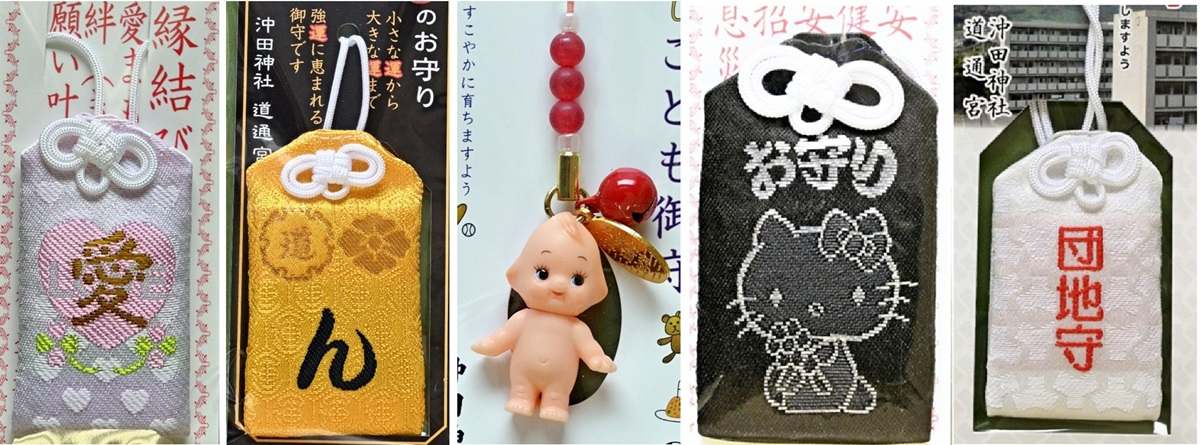
From left to right: a charm to find love, one for happiness, one for the growth of a child, a charm with Hello Kitty and one to wish the residents of housing complexes a fulfilling life
Charms for successful business, family safety, finding a mate, passing exams, academic achievement, and eliminating bad luck are often found in shrines. However, the charms found in Okita Shrine range from the mundane to the unique.
For example, sisters in their 20s from Setouchi, Okayama Prefecture, visited the shrine several times for their mother after seeing it on TV. Their mother was about to undergo surgery, so they were given two charms, one to seal away cancer and one to ensure a successful operation. They said the charms were perfect for what they wished for.
Inspired by famous people
The shrine also has talismans that can be placed in unique places or worn in different ways.
There are charms that you can place on a company’s servers to protect computers, charms in the shape of a card that you can carry in a smartphone case, charms that you can attach to a motorcycle, scooter or bicycle, and charms that you can attach to a pet’s collar.
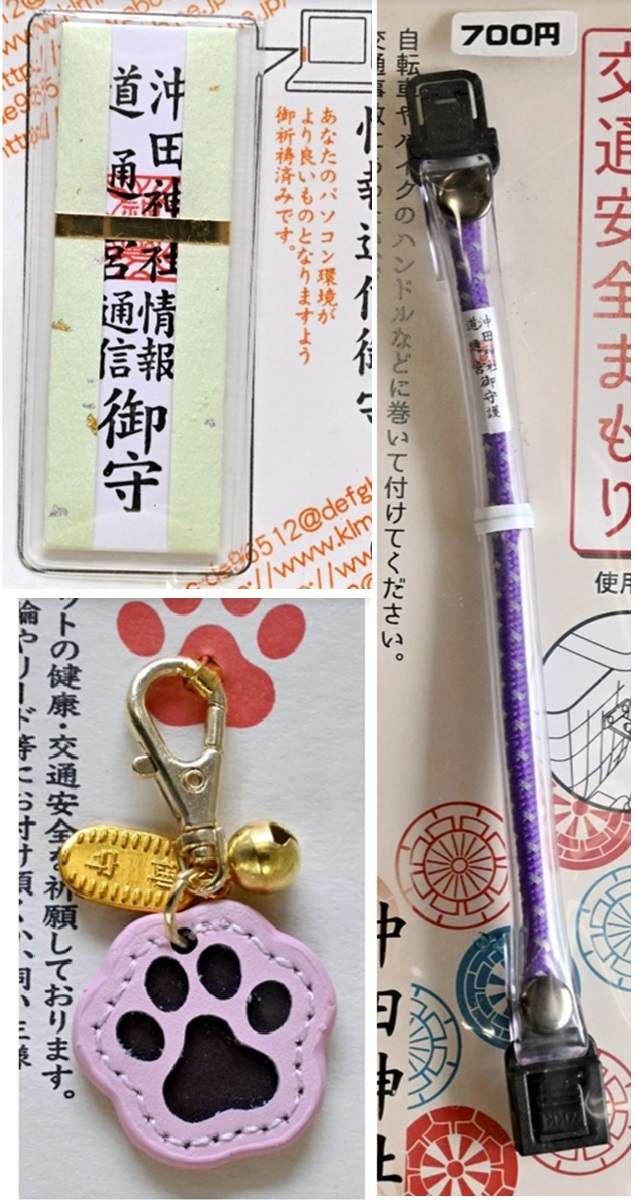
A charm that you can attach to a motorcycle, scooter or bicycle (right), a charm that you can stick to a computer (top left) and one that you can attach to your pet’s collar.
Charms featuring Hello Kitty and figures from Dragon Ball and Thomas the Tank Engine are very popular with children.
There are also charms inspired by famous people.
Hata placed a special order for a charm commemorating Hinako Shibuno, a golfer from Okayama Prefecture who won the 2019 British Open. Hata also placed an order for a charm featuring shogi pieces after Sota Fujii achieved an unprecedented 29th consecutive victory. The charm is intended for people who want to win a competition.
Some of the charms contain certain words. One of the charms reads “omotenashi,” which means hospitality, and is filled with the wish that the person holding the charm will be kind. Another charm reads “baigaeshi,” which means double repayment, and is meant to wish for even greater blessings. Another charm contains the Italian word “amore,” which became a buzzword after a football player used it to refer to a woman he was dating, and is meant to wish that they find a partner and be together forever.
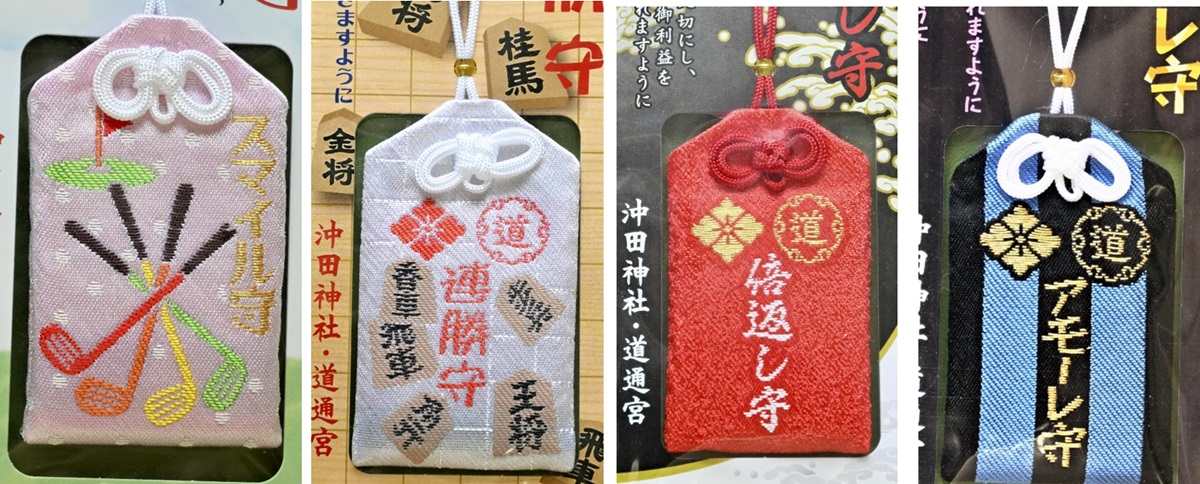
From left to right: a charm commemorating Hinako Shibuno’s victory, one honoring Sota Fujii’s victory, a charm with the word “baigaeshi” and one with the word “amore”.
According to Hata’s son Kazuki, who is assistant chief priest, about 10 to 20 types of amulets are added each year.
“The number is increasing without me realizing it,” says Kazuki, 44.
Charms are not meant to be kept forever. It is customary to return them to the shrine where you bought them. Some people who return the charms say “thank you” to them because they helped them live that period without problems or illnesses. Kazuki said that his greatest joy comes when he hears such words.
But do gods actually listen to the wishes of a human being?
“Deities watch over you as long as you have the charm,” Kazuki said. “The more effort you put into making your wish come true, instead of just expecting deities to help you, the more blessings you will receive from the deities.”
How to get there
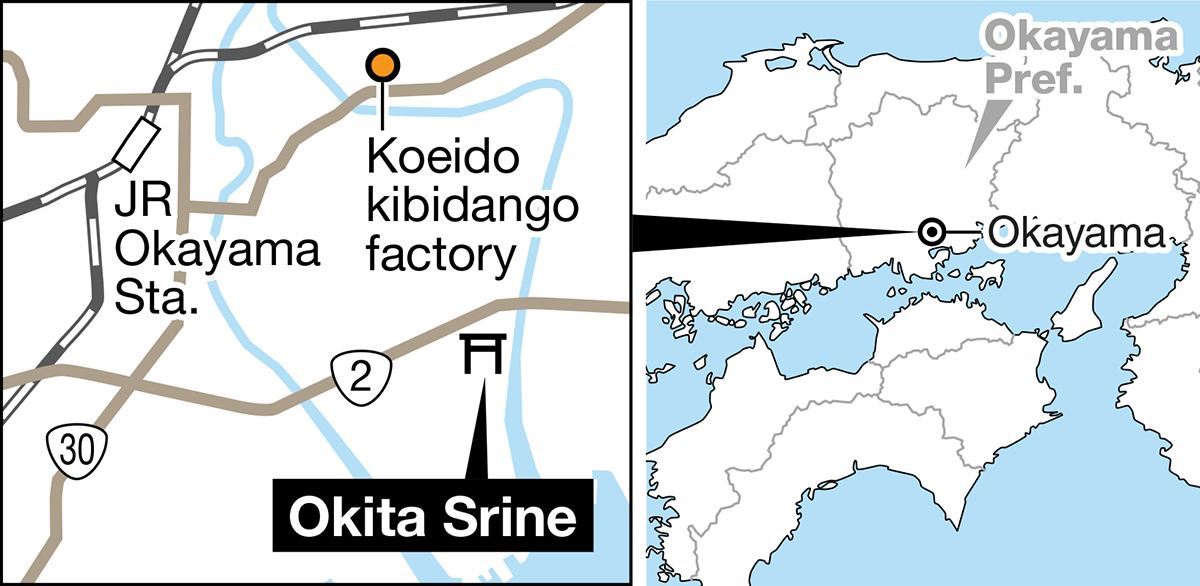
Take the Ryobi bus from JR Okayama station to Okimoto. From there, it is about a three-minute walk to the shrine.
The shrine also has yakuwaridama — a prayer to ward off bad luck — where a person puts their negative thoughts into a ball of dirt, which costs ¥100. They then break the ball by hitting it against a stone.
Kibidango Factory
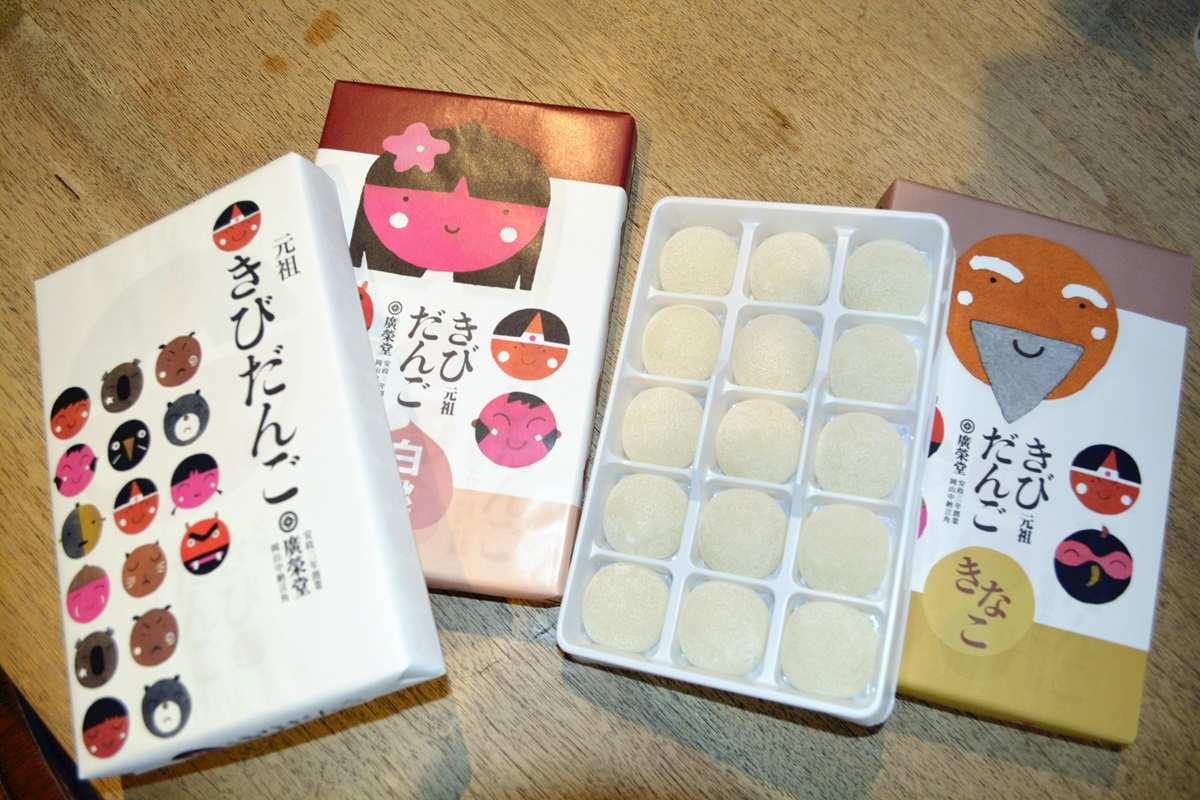
Koeido’s Kibidango
Kibidango dumplings are a famous confectionery from Okayama Prefecture. There are many different types available, made by different confectioners, and sold in souvenir shops at train stations.
Koeido, a confectionery company that has been around since 1856, sells 15 standard kibidango for ¥729, including tax. The store also sells other flavors, including peach, kinako roasted soy flour, and matcha.
The main factory, located about a 15-minute drive from Okita Temple, offers tours where visitors can see the process of kneading rice, sugar, syrup and millet.
The factory tour is only available in July and from September to early December. Reservations are required and only one group of 10 to 40 people is allowed per day.


